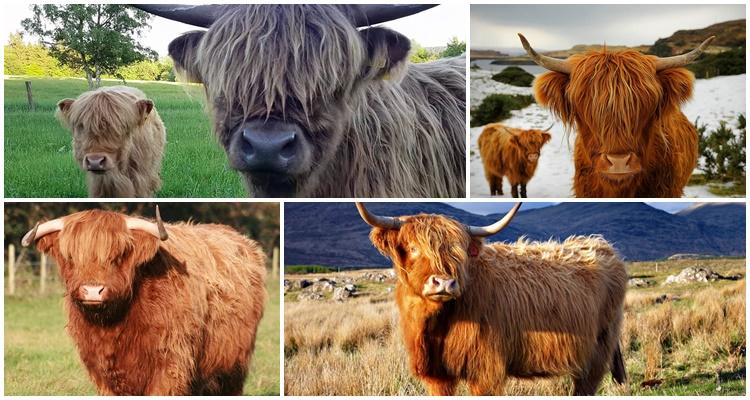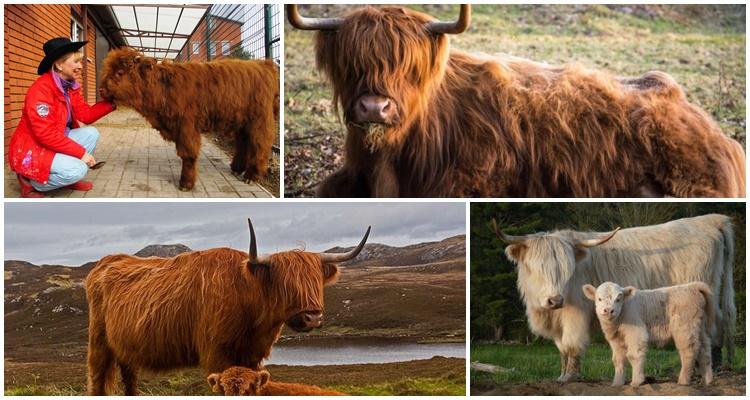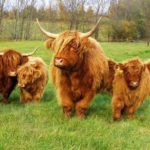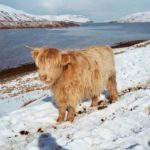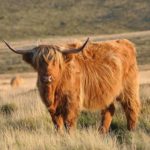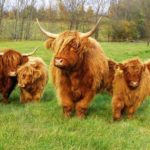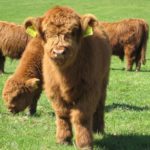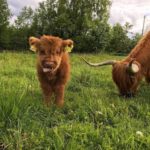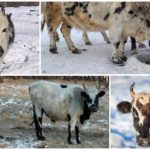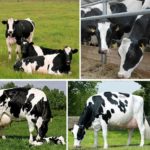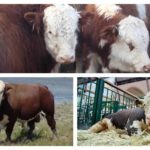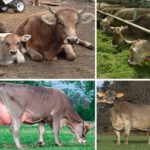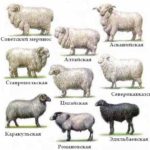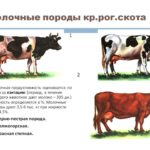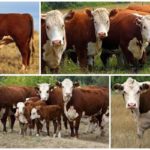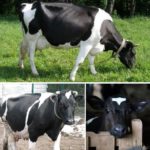The Scottish unpretentious cow bears little resemblance to an ordinary cow. The animal is more like a wild yak or a small buffalo. You should not expect large milk yields from your pet, although experts consider it to be healing. Some livestock breeders specialize in obtaining this unique vitamin product. Most farmers raise cows as meat animals.
Breed characteristics
Despite their small stature, representatives of the Scottish breed are widely known as producers of excellent meat. Muscular animals do not require special care and attention. They feed on pasture most of the time of the year and gain up to 700 kg by adulthood. Thanks to their thick, long hair, pets can easily withstand the vagaries of the weather, taking refuge under a light canopy.
In search of food, animals literally turn over layers of soil with the help of sharp horns. Thus, animals literally plow the earth. After “cultivating” the soil, the pasture is covered with young, strong vegetation. This ability helps to restore the turf after the “invasion” of sheep.
Origin
Northern Scotland gave the world unpretentious cows. The ancestors of modern Highlands lived on the harsh land of the Northern Scottish Highlands and the Hebrides. The highlands are famous for their harsh climatic conditions, so the local cattle had rare endurance and unpretentiousness. Animals living in mountainous areas were distinguished by a red-brown color, while the fur of the inhabitants of the islands was colored black.
As a result of competent crossing of these varieties of animals, a highland Scottish breed of cows appeared. By the beginning of the 19th century, pets acquired a variety of colors, but the most common color was cocoa color (mojo).
Subsequently, cows spread throughout the Australian continent and the countries of North America. As a result of selection, the animals inherited the appearance of their shaggy ancestors, but greatly decreased in size. Today they resemble funny miniature versions of ancient Scottish cows.
The productivity and charm of pets melted the hearts of many European livestock breeders.Even the Queen of Great Britain could not resist the charm of cows. The Scottish residence of Balmoral, which has long belonged to Elizabeth, is home to a whole herd of horned beauties.
Appearance
Animals have an extraordinary appearance. The combination of powerful physical data with a decorative appearance makes an indelible impression.
- A strong skeletal system, wide chest and developed muscles indicate the remarkable physical strength of the pet.
- Thanks to the curved ribs, the cow's body has an oval shape.
- The pet's powerful legs are short, but stable. This feature allows the animal to easily move across hilly terrain.
- The animal’s slender long neck is crowned with a large head. Bulls have a neck decorated with a crest.
- The wide muzzle and strong jaws of the cow are designed for obtaining food in mountainous terrain.
- The animal's forehead and eyes are covered with thick, wavy bangs. Luxurious strands serve to protect your pet from wind, sand and insects.
- The mountain cow is able to protect itself with massive sharp horns.
- Pets have thick wavy or straight hair. In some individuals, the length of the strands reaches 30 cm. The hair of pets is colored beige, yellow, gray-brown, red, brownish-yellow or black. In rare cases, original spotted individuals can be found. Thanks to the unique structure of the cow's coat, it is not afraid of precipitation and frost. The outer layer consists of long guard hairs, richly impregnated with fat; the functions of the inner layer are performed by a soft, dense undercoat.
- The growth of miniature animals barely reaches 110-130 cm.
- The pets' short stature is more than compensated for by their impressive mass. Even in unfavorable climatic conditions, cows can easily fatten 440-650 kg.
Productivity
Cows are not of particular interest as a source of milk, because the daily milk yield from one pet does not exceed 5 liters. Scots are bred for quality meat. Animals are sent for slaughter at the age of 2-3 years. During this period, meat has a special taste and contains a record amount of proteins, as well as iron.
Pros and cons of the breed
The Highland breed is ideal for the production of meat products. However, along with obvious advantages, animals have a number of significant disadvantages.
Maintenance and care of Scottish cows
Scottish cows tolerate cold well and do not tolerate being kept on a leash, so until the onset of real frost, the life of the cows is spent on the pasture. Protective canopies and feeding troughs are installed in the pasture area. Here pets can find shelter at night and shelter from the rain. A separate shelter is made for calving cows and small calves.
Under no circumstances should armfuls of hay for feeding cows be placed on the ground - clumsy animals trample the feed into the soil. Thus, the farmer is doomed to unnecessary expenses.
In winter, animals are kept in a dry, clean, ventilated barn. Highlands are not large in size, so 6 square meters is enough to comfortably accommodate one animal. m area. Cows and calves are kept at a temperature of +10-16 degrees. The bull feels good in a cool room.
The stalls are equipped with hay mangers, individual feeders and drinking bowls. The floor in cow apartments is covered with a small layer of bedding consisting of hay and straw. It is recommended to equip the barn with a trench for collecting and draining manure. In this case, bedding is not provided to the animals.
The barn is regularly cleaned and ventilated by opening the windows and doors. This will help avoid harmful ammonia fumes. The procedure is performed during daily walking of livestock.
Diet planning
In central Russia, animals feed clover crops, fescue, alfalfa or perennial rye. Having inherited from their ancestors the ability to survive on pasture, the Scots prefer rough and juicy food. In winter, pets are given whole grain, steamed straw, hay, as well as meal, silage and cake. Animals also like fodder root crops.The grain mixture is made from the chaff of oats, corn, wheat or barley.
For full development, pets are treated with supplements made from bone meal, ash and fish oil. In addition, cows must be given salt.
Breeding Features
Scottish cows are self-sufficient and rarely need human help. Cows give birth and feed their calves on their own; supervision of the young is needed only in winter. Heifers reach sexual maturity at 3 years of age. Calving usually occurs without complications. The offspring have innate immunity, so there are practically no deaths among babies. As a rule, calves are born in February and March, so from an early age they feed on young greens.
Diseases, prevention, treatment
Scottish cows are extremely resistant to infectious and cold diseases. Impenetrable immunity reliably resists viruses, so there are no cases of infection. Experts explain this ability by genetic properties. They are manifested in the special body structure and coat structure of cows. The lack of contact between pets and other animals plays a big role.
In rare cases, pets injure each other during a fight.
How to choose a good specimen and where to buy
When choosing a cow, you need to pay attention to the mucous membranes and teeth of the animal. There should be no inflammation or traces of pus on the mucous membranes. A healthy calf should be well-fed and active.

